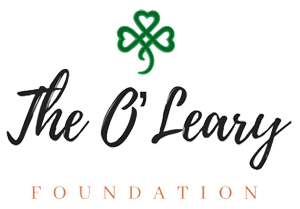“This Woman” – A Poem by DV Survivors
While we hope that every client we work with chooses to permanently stay away from her abuser, some make the decision to go back. Why?
There may be many reasons behind someone’s decision to return: a desire to return to some semblance of normalcy; to try and keep her family together for the sake of her children; a perceived lack of resources, or emotional ties.
While we want every client to continue through our program and live free from abuse, we also want to respect each survivor’s choice.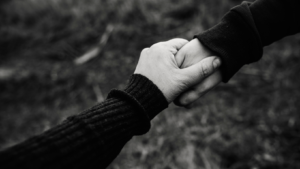
Unlike a perpetrator of domestic violence, we don’t force our clients to stay. It’s not our place to tell a survivor what she must do.
So although we want everyone to stay free from abuse once they initially escape it, it is our responsibility to support each client’s choices and make sure they know we have their back. When a survivor decides to go back, we offer them resources and let them that we are here if they should need help.
Because our job isn’t to force a survivor into where we want her to be – it’s to support her choices and provide her with the tools she needs to empower herself if she chooses. To be there – that’s our purpose.
Healthy relationships are often thought of as unachievable and hard to maintain, however a relationship can prosper and succeed if both partners are determined to build a good connection. Furthermore, a relationship where you feel safe, accepted, and most importantly, loved is a relationship worth having, and one that you deserve. Here are just a few features of a successful romantic partnership.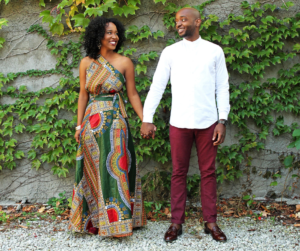
Trust is the foundation of any healthy relationship. Trust in a relationship involves being confident that your partner will be honest with you and honor your relationship. Moreover, it also means that you can confide in your partner and feel safe around them. Trust is not established overnight, but rather gradually through emotional vulnerability and communication. Being open and honest with your partner creates a relationship of trust and understanding. Trusting your partner and knowing that your partner trusts you is a crucial aspect of an intimate relationship.
Another key aspect of a good partnership is respect. Many people underestimate the importance of feeling respected in their relationships, which detracts from the experience of a healthy connection. Listening to and respecting your partner’s feelings, needs, work, space, and opinions are all necessary to build a nourishing and lasting relationship. Nonetheless, respect should be a mutual feeling, felt and displayed by both partners. It is also important to respect yourself, and your boundaries. Self-respect is a part of a healthy connection with yourself and will in turn life up each another’s mental health and well-being. 
A relationship also cannot truly prosper without effective communication. Discussing things that make you feel uncomfortable leads to a better connection between you and your partner and eliminates any barriers that may develop. Similarly, talking things out rather than ignoring them allows for less resentment and bitterness to fester. Good communication can be easily established if both parties are willing to talk and interact about their feelings and can diminish any built-up feelings in a relationship and allow for an improved connection.
In a healthy relationship, both partners uplift one another and support the hobbies, passions, and interests of each other. In addition, having a supportive partner allows for better navigation through tough situations and acts as an emotional outlet. Support in a relationship can be shown in many ways, including through compassionate listening, problem-solving, and attending events important to his or her partner.
All relationships are different to some extent, and these factors may not be observed 100% of the time. Nonetheless, these healthy signs should be sought as a pattern in all relationships. Relationships are not perfect, but that should not be the excuse for toxic and/or damaging behavior. A relationship should not be a burden to you or a toll on your mental health – rather, it should be a comforting relation, filled with love and joy.
Written by Fiza Aamir
References
https://www.psychologytoday.com/ca/blog/friendship-20/201812/7-ways-build-trust-in-relationship
https://kidshelpphone.ca/get-info/healthy-relationships-vs-unhealthy-relationships
https://www.joinonelove.org/signs-healthy-relationship/

After getting fairly good grades in high school and trying out for a number of colleges, I got a chance to study at one of the best universities not only in New Delhi, but in India. I was happy; going to college was my gateway to liberty and experimentation. What could be better than that? Except I rarely had a clue as to what would happen after I went to college.
It was my first time not living with my parents. Some colleges in India have very strict rules for their students, especially for girls. A cousin back in my home state of Odisha had a curfew of 6:30 in the evening! But parents are happy their daughters are being taken care of. They prefer their daughters’ safety to their freedom. Victim blaming is big in the country too — I have lost count the number of times my parents would scold me for coming home late. (It is unsafe for a girl to stay outside after dark whereas I had rarely seen boys imposed with such rules.) College was going to be an escape from all this.

I had hoped to make tons of friends in college. But there were only a few kids in my class and many boys in my class were shy in front of girls. Maybe I had set my expectations too high for college. But then a guy came up to me asking where a certain class was happening. He was good-looking and seemed smart. My heart fluttered a little once I knew he was in my class. We made some small talk that day and would say hi to each other in class when we could.
Sometime later, there was a small party where many people from my class turned up. I decided to go too. I ran into the guy I had started talking with and started dancing with him. After a while, we were making out. The next day we decided we would not get seriously involved with each other. Even though we had decided that, he told me not to see any other person. I found that weird but did not pay much attention to it. I found it cute when he would occasionally get jealous of my guy friends and felt sorry for him when he told me that his previous girlfriend had cheated on him. I trusted him completely and told him about the abuse I had gone through when I was a child. He told me that I could count
on him.

Then we had a small fight. He had read some texts on my phone and said that I was getting too friendly with a school friend. I thought I was the one who had made the mistake and didn’t say that I felt it was wrong to check someone’s phone like that. He would constantly invite over his girl friends but it was a problem whenever I met with a guy friend. It became worse when he slapped me for just hanging out with two male friends. I was still hung up on the idea of saving whatever we had together. So I decided to stay. The fights became bigger and louder, but we would always get back together. I was too busy being a loyal girlfriend and was scared that I would get lonely if I left him. On one particular morning, we woke up together and he told me to have intercourse with him.
I was not in the mood and told him so but he wouldn’t listen and kept forcing himself on me. I let him do whatever he wanted but told him that we would not see each other after that. He didn’t feel that he had done anything wrong and would not even apologize. When it dawned on him that he might have done something wrong, he begged me to keep it a secret and said that he would do anything to fix it. I was going through a hard time myself and he was so nice to me the next few days I really felt like he had changed. Now when I look back, I think of the number of times I thought he would change.
Things changed after a year when he moved to a different city because he got into another college. I was sad because he was leaving. But I didn’t know what a boon this would turn out to be. I made some new friends because I had more time now. More time without him, more time not fighting. We would talk on the phone and when I told him I had made some
new friends, specifically guy friends, he would get mad. Then some of my friends advised me not to tell him every single thing. And when I did so, I saw that I was saving myself from his toxic reactions. He would sometimes come to meet me and I would do the same. But I was starting to learn that life could be okay without him in it. It would actually be better.

One of the final nails in the coffin was him telling me during a fight that he would leak my private pictures on Instagram. That was not only scary but really hurtful. I did not know he could go that far. He did not go ahead with it but told me to not tell anyone and followed the same pattern of being nice for a few days before he became his real self. This had become my life for the last two years. I couldn’t believe I had wasted so much time with a person who had taken so much from me. I knew I had to get out of this. I knew it would be one of the hardest things to do because of how attached I had become. It took me some time to accept the idea that I had to leave him but I finally did it over a phone call. He didn’t try to stop me but he would try to stay in touch; I did have some trouble cutting him off completely.
But it’s going to be a year since I broke off all contact with him. A write-up of a thousand words doesn’t begin to say all that I felt. I wouldn’t say I have moved on completely as some memories still remain fresh in my mind; there were many good ones. But other memories were those of abuse, emotional as well as physical. It took me a lot of time to accept that it was abuse and call it that. I see so many people, mostly women still going through the same thing. It is important to listen to their stories and make them feel safe.
One of my major reasons to start writing for an organization working for domestic violence survivors was to get my story out there and listen to what other women have had to say. I feel a solidarity of sorts when I read their life experiences. There is a lot that still has to be changed in society and progress is hardly unilaterally forward. But each day when a person comes
out of their abusive environment, it is a win for all survivors.
Written by Siddhi Samal
There is often a common theme among awareness campaigns for domestic abuse: the color purple. While purple has often been tied to royalty and women, there is a deeper significance with the ties to the Domestic Violence Awareness Movement.
 Beginning in the 1900s, the Women’s Suffrage Movement incorporated purple, along with white and gold, as the colors of the National Women’s Party; the colors symbolized “purity, hope, and loyalty”. With the growth of the women’s movement in the 20th century and culminating in the March for the Equal Rights Amendment on July 9, 1978 in Washington, D.C, purple remained a prominent color of the movement. Many of the women who marched wore lavender or carried banners of purple, white, and gold. Following the march, the National Coalition Against Domestic Violence held a “Day of Unity” on October, 1981 to bring together advocates working to end violence against women, and Domestic Violence Awareness Month was conceived. Following this, in 1983, Congress designated October as Domestic Violence Awareness Month and the color purple has since been associated with the fight to end domestic violence.
Beginning in the 1900s, the Women’s Suffrage Movement incorporated purple, along with white and gold, as the colors of the National Women’s Party; the colors symbolized “purity, hope, and loyalty”. With the growth of the women’s movement in the 20th century and culminating in the March for the Equal Rights Amendment on July 9, 1978 in Washington, D.C, purple remained a prominent color of the movement. Many of the women who marched wore lavender or carried banners of purple, white, and gold. Following the march, the National Coalition Against Domestic Violence held a “Day of Unity” on October, 1981 to bring together advocates working to end violence against women, and Domestic Violence Awareness Month was conceived. Following this, in 1983, Congress designated October as Domestic Violence Awareness Month and the color purple has since been associated with the fight to end domestic violence.
 In addition to its ties to the women’s rights movement, purple is often associated with the purple heart in the United States and is viewed as a symbol of peace, courage, and survival. The association between the domestic violence awareness movement and the color purple is also used as a way of remembering and honoring the victims and survivors of domestic violence.
In addition to its ties to the women’s rights movement, purple is often associated with the purple heart in the United States and is viewed as a symbol of peace, courage, and survival. The association between the domestic violence awareness movement and the color purple is also used as a way of remembering and honoring the victims and survivors of domestic violence.
 Domestic violence reform advocates utilize the color purple as a means to raise awareness of the issue and show survivors they are not alone. The color purple has been utilized in a variety of awareness campaigns including celebrity endorsements with Serena Williams lending her voice and designing a purse for the Allstate Foundation Purple Purse Challenge with proceeds benefiting domestic violence organizations. Additionally, many organizations integrate purple into their awareness campaigns as a means to start a conversation about domestic violence. Finally, cities and companies have utilized purple in their awareness campaigns. New York City organized a NYC Go Purple Day in 2018 which involved several landmarks around New York City, including City Hall, 1 World Trade Center, and Yankee Stadium, being illuminated in purple. The purpose of these campaigns is to send a message of support to victims and make them feel seen and heard. Further, by utilizing the color on popular buildings, it leads bystanders to seek information on the topic and provides resources.
Domestic violence reform advocates utilize the color purple as a means to raise awareness of the issue and show survivors they are not alone. The color purple has been utilized in a variety of awareness campaigns including celebrity endorsements with Serena Williams lending her voice and designing a purse for the Allstate Foundation Purple Purse Challenge with proceeds benefiting domestic violence organizations. Additionally, many organizations integrate purple into their awareness campaigns as a means to start a conversation about domestic violence. Finally, cities and companies have utilized purple in their awareness campaigns. New York City organized a NYC Go Purple Day in 2018 which involved several landmarks around New York City, including City Hall, 1 World Trade Center, and Yankee Stadium, being illuminated in purple. The purpose of these campaigns is to send a message of support to victims and make them feel seen and heard. Further, by utilizing the color on popular buildings, it leads bystanders to seek information on the topic and provides resources.
 While a color may not seem significant in the issue of domestic abuse, its ties to the roots of the women’s rights movement and its significance in granting legitimacy to survivors and raising awareness of the issue does make a difference. By raising awareness of the issue, the public stigma surrounding domestic violence can be diminished. As the public becomes more aware of the prevalence of the issue, greater resources and support can be provided to the survivors and remembrance for the victims.
While a color may not seem significant in the issue of domestic abuse, its ties to the roots of the women’s rights movement and its significance in granting legitimacy to survivors and raising awareness of the issue does make a difference. By raising awareness of the issue, the public stigma surrounding domestic violence can be diminished. As the public becomes more aware of the prevalence of the issue, greater resources and support can be provided to the survivors and remembrance for the victims.
Written by Maggie Purcell
Sources:
- https://feminist.org/news/july-9-1978-feminists-make-history-with-biggest-ever-march-for-the-equal-rights-amendment/
- https://www.alexandrahouse.org/get-involved/events/domestic-violence-awareness-month/
- https://www1.nyc.gov/site/ocdv/press-resources/nyc-go-purple-day.page
- https://engageforgood.com/allstate-foundation-purple-purse-and-serena-williams-launch-national-street-art-campaign-to-make-domestic-violence-and-financial-abuse-visible/
- https://www.ebony.com/exclusive/what-you-need-to-know-about-domestic-violence/
- https://mmcenter.org/stay-informed/domestic-violence-awareness-month
- https://www.wrcnbc.org/why-purple-for-dvam/
- https://www.domesticshelters.org/articles/ending-domestic-violence/the-color-purple
- https://www.joyfulheartfoundation.org/learn/child-abuse-neglect/effects-child-abuse-neglect
Members of the LGBTQ+ community are experiencing disproportionate rates of domestic abuse, including intimate partner violence and sexual violence. Yet, when we think of domestic abuse, it would be unusual for an image of a same-sex couple to come to mind. Moreover, LGBTQ people experience unique hurdles and traumas which make it more difficult to find support when experiencing domestic abuse.
 Despite the lack of awareness and scientific research into this subject matter, the studies that do exist show resounding evidence of domestic abuse for members of the LGBTQ community. Several studies have shown that lesbian or gay individuals report domestic violence at rates equal to or higher than people are heterosexual.
Despite the lack of awareness and scientific research into this subject matter, the studies that do exist show resounding evidence of domestic abuse for members of the LGBTQ community. Several studies have shown that lesbian or gay individuals report domestic violence at rates equal to or higher than people are heterosexual.
Bisexual men and women are at heightened risk, showing that bisexual women report more instances of rape, stalking, and/or physical violence than lesbian or heterosexual women. For bisexual men, the same is true: they report a higher prevalence of rape, physical violence, and/or stalking compared to their heterosexual or gay counterparts. An especially alarming situation is that of transgender people, who experience an immensely heightened risk for violence.
In-depth statistics are listed below:
- 44% of lesbian women and 61% of bisexual women experience rape, physical violence, and/or stalking from a partner in their lifetime, compared to 35% of heterosexual women
- 26% of gay men and 37% of bisexual men, and 29% of heterosexual men experience rape, physical violence, and/or stalking from a partner in their lifetime
- About 1 in 5 (about 22%) bisexual women versus 1 in 10 (about 9%) heterosexual women have been raped by a partner in their lifetime
- In one survey, 54% of trans respondents experienced some form of intimate partner violence, 47% of trans respondents were sexually assaulted within their lifetime, and 10% were sexually assaulted within the last year
 If domestic abuse among the LGBTQ community is this disproportionate, then why is it not addressed nearly as much as heterosexual domestic abuse? First, it is important to recognize that the experience of domestic abuse for sexual minorities is unique and often much different from what occurs in heterosexual intimate partner abuse.
If domestic abuse among the LGBTQ community is this disproportionate, then why is it not addressed nearly as much as heterosexual domestic abuse? First, it is important to recognize that the experience of domestic abuse for sexual minorities is unique and often much different from what occurs in heterosexual intimate partner abuse.
LGBTQ victims of domestic abuse can face various tactics of abuse, many psychological. Abusers may threaten to “out” or expose their partner’s sexual orientation or gender. Not only is the experience of domestic abuse unique for LBGTQ victims, but the resources, awareness, and support systems to help them escape their situation are scarce. Therefore, another reason domestic abuse is not addressed is due to various barriers that prevent victims from seeking help or coming forward.
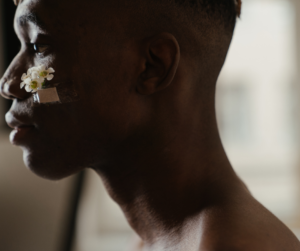 Sexual minorities may experience isolation from their families or childhood communities, making it more difficult to seek familial support or temporary housing when escaping domestic abuse. There is also a danger of “outing” oneself if a victim were to come forward and their families realize their sexuality. Due to all the potential obstacles that LGBTQ domestic abuse victims may face when seeking help, nearly 45% of victims never report the violence to the police. More potential obstacles for sexual minority victims include:
Sexual minorities may experience isolation from their families or childhood communities, making it more difficult to seek familial support or temporary housing when escaping domestic abuse. There is also a danger of “outing” oneself if a victim were to come forward and their families realize their sexuality. Due to all the potential obstacles that LGBTQ domestic abuse victims may face when seeking help, nearly 45% of victims never report the violence to the police. More potential obstacles for sexual minority victims include:
- Societal belief that same-sex relationships cannot experience domestic abuse
- Insensitivity from non-LGBTQ staff members or service providers
- Lack of appropriate training and awareness on the subject
- A fear that opening up about LGBTQ domestic violence will contribute to stigmas around the community
- Lack of LGBTQ friendly resources
It is crucial that through raising awareness, conducting further research, building more supportive communities, and increasing resources, we all contribute to reducing the difficulties of escaping domestic abuse for members of the LGBTQ community. If you or someone you know might be experiencing domestic abuse within an LGBTQ+ relationship, please see below for resources.
Resources
- National Domestic Violence Hotline: 800.799.SAFE (7233).
- Read this guide to learn more about legal rights as an LGBTQ victim of domestic violence.
- See a list of organizations involved in relieving domestic abuse in LGBTQ communities here.
- Visit the LGBT National Help Center for various hotlines, peer support, and local resources.
- More information and resources have been compiled by the Human Rights Campaign.
Sources:
https://vawnet.org/sc/rates-and-prevalence-dv-lgbtq-communities
https://williamsinstitute.law.ucla.edu/publications/ipv-sex-abuse-lgbt-people/
https://ncadv.org/blog/posts/domestic-violence-and-the-lgbtq-community
 Domestic Violence is a global issue that targets women of developing countries on a larger scale than developed countries. Despite its rapid growth and advancements, domestic abuse, or intimate partner violence (IPV) is deeply entrenched and prevalent in India. One in three women in India have faced abuse however, only a small number report it. Domestic violence can be accounted as the most common cause of non-fatal injury to women. This issue can be derived from cultural ideologies and the overall silence that surrounds it.
Domestic Violence is a global issue that targets women of developing countries on a larger scale than developed countries. Despite its rapid growth and advancements, domestic abuse, or intimate partner violence (IPV) is deeply entrenched and prevalent in India. One in three women in India have faced abuse however, only a small number report it. Domestic violence can be accounted as the most common cause of non-fatal injury to women. This issue can be derived from cultural ideologies and the overall silence that surrounds it.
IPV affects a majority of all Indian women, but certain demographics such as status, age, and education play a significant role. Older women, divorcees, and poor women are all more likely to experience domestic violence. Women with unemployed, alcoholic, and poorly educated partners are also more likely to be subjected to domestic abuse. Women who are less likely to experience domestic violence and abuse include those with a higher social standing, economic independence, and higher education. However, it was also observed that women who had a job were more likely to face intimate partner violence, which could be because it is not the norm for women to work in India. While these factors are the most commonly observed in India, they cannot be used to conclude a correlation.
 There is a strong connection between domestic abuse and the cultural norms of India. For instance, Indian culture emphasizes the value of childbirth, more specifically the birth of boys. Therefore, if a woman is infertile or gives birth to a baby girl, she is more likely to face domestic violence. Moreover, the traditional practice of giving a dowry is still very prevalent in India, more so in rural India. A woman’s in-laws and partner may subject her to abuse if the dowry is insufficient or lacking. In India, subjecting one’s wife, daughter, sister, etc. to domestic violence is deemed normal and not worthy of any attention. Hence, it can be said that in India culture plays a role in abusive behaviors against women. These harmful ideologies fuel the problem and prevent women from seeking the help they need.
There is a strong connection between domestic abuse and the cultural norms of India. For instance, Indian culture emphasizes the value of childbirth, more specifically the birth of boys. Therefore, if a woman is infertile or gives birth to a baby girl, she is more likely to face domestic violence. Moreover, the traditional practice of giving a dowry is still very prevalent in India, more so in rural India. A woman’s in-laws and partner may subject her to abuse if the dowry is insufficient or lacking. In India, subjecting one’s wife, daughter, sister, etc. to domestic violence is deemed normal and not worthy of any attention. Hence, it can be said that in India culture plays a role in abusive behaviors against women. These harmful ideologies fuel the problem and prevent women from seeking the help they need.
 In India, of all women that had experienced IPV, only 14% reported it and sought help. This low rate can be traced back to the stigma surrounding domestic violence. It is often observed that a victim’s family has a negative response towards the victim’s experiences. The family may even dismiss the claims altogether. However, this cannot be used to define all families, as many variables come into play. Poverty, patriarchal norms, family structure, etc. all play a factor in a family’s ability to help the victim. The response from law enforcement also affects this low rate. Like other developing nations where domestic violence is prevalent, police typically have a negative response towards these cases. In India, they do not have a reputable image and many people distrust them. Therefore, many victims of IPV avoid seeking help from the police when they should feel comfortable reporting abuse without worrying about being ridiculed or taken seriously.
In India, of all women that had experienced IPV, only 14% reported it and sought help. This low rate can be traced back to the stigma surrounding domestic violence. It is often observed that a victim’s family has a negative response towards the victim’s experiences. The family may even dismiss the claims altogether. However, this cannot be used to define all families, as many variables come into play. Poverty, patriarchal norms, family structure, etc. all play a factor in a family’s ability to help the victim. The response from law enforcement also affects this low rate. Like other developing nations where domestic violence is prevalent, police typically have a negative response towards these cases. In India, they do not have a reputable image and many people distrust them. Therefore, many victims of IPV avoid seeking help from the police when they should feel comfortable reporting abuse without worrying about being ridiculed or taken seriously.
 The issue of domestic abuse in India has reached an alarming rate. While the country itself is on the rise to growth and prosperity, its women still overwhelmingly face intimate partner violence. This problem, however, can be managed if the proper measures are taken. Steps toward the elimination of domestic violence involve the abolishment of toxic cultural ideologies, along with education, enforced laws, and stricter punishments for offenders. The need for action towards the erasure of domestic violence is immediate and crucial to protect Indian women; without these steps, no country can fully claim to be truly prosperous.
The issue of domestic abuse in India has reached an alarming rate. While the country itself is on the rise to growth and prosperity, its women still overwhelmingly face intimate partner violence. This problem, however, can be managed if the proper measures are taken. Steps toward the elimination of domestic violence involve the abolishment of toxic cultural ideologies, along with education, enforced laws, and stricter punishments for offenders. The need for action towards the erasure of domestic violence is immediate and crucial to protect Indian women; without these steps, no country can fully claim to be truly prosperous.
Written by Fiza Aamir, Blog Writing Volunteer at Sylvia’s Place
Sources:
https://www.ncbi.nlm.nih.gov
https://www.bmj.com
https://scholarworks.waldenu.edu/cgi/viewcontent.cgi?article=1006&context=jswgc
https://www.justice.gov/eoir/page/file/1293726/download
Domestic violence, also known as intimate partner violence, is a system of power and control that manifests as abuse or aggression carried out in the context of a close relationship. It often involves physical, financial, and sexual abuse. Domestic violence is common in the United States, with about 25% of women and 10% of men experiencing at least one instance of sexual assault, physical violence, or stalking. Transcending the physical realm of domestic violence, over 43 million women and approximately 38 million men have reported instances of psychological aggression from an intimate partner. With its high prevalence in various forms, it should be no surprise that domestic violence is a national public health issue. However, the global extent of domestic violence has not always been as well-addressed.
This shifted with the onset of the COVID-19 pandemic, which shed light on a global surge in domestic violence cases. Nearly 90,000 instances of violence against women were reported in South Africa during the first week of lockdown alone. Lebanon and Malaysia reported a doubling in call volume, and China reported a tripling. With these countries and many others reporting concerning trends, the United Nations Secretary-General António Guterres publicly urged governments to prioritize efforts dedicated to ending violence worldwide, thereby raising the issue to a global platform. In other words, domestic violence was officially declared a pandemic amidst a pandemic.
Historically, domestic violence has been underreported despite its global prevalence. Reasons for this trend are multifaceted. The dilemmas survivors face are inherent to the definition of domestic violence. Domestic violence is defined as a systematic pattern of power, control, and abuse between people who are married, dating, or living together: people who are supposed to love and care for each other. The consequences of filing a claim against a loved one can feel daunting and paradoxical. A survivor may remain silent because of what is at stake. Survivors have often built a life with their perpetrator(s), which could encompass economic stability, friends, and family members: assets they could be terrified of losing. And although resources and services are in place to support and protect their assets and rights, many survivors forego this assistance due to fears of retaliation and embarrassment. As a result, domestic violence often emulates a hostage situation, which can make survivors feel powerless.
Other reasons for silence are more macroscopic, stemming from various understandings of domestic violence around the globe: across historical and cultural lines. This highlights the complexity of domestic violence as a construct. Statistics show that domestic violence disproportionately impacts women compared to men. And according to a report by the United Nations, at least 600 million women live in countries where domestic violence is not considered a crime. This perspective of seeming indifference is rooted in patriarchal values that have shaped familial constructs in a majority of the world’s countries throughout time. Feminine partners are typically expected to be subservient dependents of their masculine partners and are largely excluded from positions of power. To exacerbate these imbalanced power dynamics, societal constructs—including the maintenance of family privacy and victim-blaming—also threaten to shame survivors and prevent them from securing justice against their perpetrators.
These global themes in domestic violence and its underreporting highlight the need for both individual and collective action. Guterres may have called upon governments to respond, but power ultimately lies among the people who are governed. It is our duty to advocate for those who need social support and strength in numbers. A global problem requires a global solution. Rather than victim-blaming and turning a blind eye, we should fight for justice and rise. Rather than shaming and stigmatizing, we should rally against the very constructs that we, as a society, have forged—the chains shackling survivors from the joy and justice they deserve. Rather than judging, we should listen empathetically to survivors and meet them where they are. Within all of us is the strength to shape society: one word and action at a time. Amidst a pandemic that has plagued the world for centuries, each survivor embodies a unique story. And by affirming survivors’ stories, we will see the strength in ourselves and in our society. To overcome silence and make a change.
Written by Delaney D. Ding
Sources:
https://talkingparents.com/blog/july-2019/why-domestic-violence-goes-unreported
https://jech.bmj.com/content/58/7/536
https://www.tampabay.com/archive/2013/06/21/domestic-violence-a-global-issue/
https://onlinelibrary.wiley.com/doi/pdf/10.1111/nhs.12197
https://www.npr.org/sections/coronavirus-live-updates/2020/04/06/827908402/global-lockdowns-resulting-in-horrifying-surge-in-domestic-violence-u-n-warns
https://news.un.org/en/story/2020/04/1061052
https://www.cdc.gov/injury/features/intimate-partner-violence/index.html
https://ncadv.org/learn-more
(Both Spanish and English Translations Are Provided Below.)
El suroeste de Michigan es el hogar de inmigrantes de todo el mundo. El censo de 2019 dice que más de 600.000 personas que viven en Michigan nacieron en otros países—más de 6% del población. Más de la mitad de los inmigrantes en Allegan han vivido en los Estados Unidos por más de 20 anos; cerca de 40% son ciudadanos naturalizados. Vienen de América Latina, Europa, Asia, y un numero pequeño de personas de África y Canadá.
Como inmigrante, podría ser difícil saber a donde se puede ir en una crisis. La familia está lejos, y sea difícil conocer gente con la que se puede hablar abiertamente sobre lo que pasa en casa. Si alguién en la familia no tiene documentos de ciudadania, preguntar por asistencia en situaciones de violencia podría ser peligroso. Sin embargo, es importante saber que siempre hay asistencia sin importar tu nacionalidad.

En Sylvia’s Place, lo más importante es la seguridad de quienes nos visitan. No es necesario ser ciudadano no es necesario para recibir nuestros servicios. Cuando alguien escapa de una situación de abuso doméstico, es posible que no tenga consigo sus documentos o papeles. Lo entendemos, y trabajamos para proporcionar un espacio seguro sin importar tu nacionalidad.
A parte de Sylvia’s Place, estas otras organizaciones tienen recursos para inmigrantes que han sido abusado:
- Justice for Our Neighbors: En JFON, los abogados y otro personal ayudan a las personas a navegar la ley de inmigración. Durante la pandemia de COVID 19, ellos están trabajando con personas en línea. La oficina de Kalamazoo acepta casos relacionados con la ley de inmigración humanitaria (incluidas las peticiones de la Ley de Violencia contra la Mujer), visas U (para víctimas de delitos), visas T (para proporcionar alivio a las víctimas de trata de personas), peticiones de Estatus de Inmigrante Juvenil Especial (para menores no acompañados que puede haber sido abandonado, abusado o descuidado por uno o ambos padres), casos de asilo, solicitudes de tarjeta de residencia y solicitudes de naturalización. Puede comunicarse con la oficina nacional en njfon.org. Puede comunicarse con la oficina de Kalamazoo directamente en jfonmi.org/kalamazoo o llamar al (269) 743-2501.
- Michigan Immigrant Rights Center: MIRC se inició como un servicio para campesinos inmigrantes, y se ha expandido para abordar una variedad de problemas sociales importantes para la población inmigrantes. Su línea directa confidencial está abierta de lunes a viernes de 9 a.m. a 5 p.m. y ofrece asesoramiento legal gratuito sobre problemas desde abuso doméstico hasta derechos laborales; el número es (734) 239-6863. Para más información, visita org/.
- Migrant Legal Aid: Situado en Grand Rapids, Migrant Legal Aid ofrece servicios para los inmigrantes, particularmente campesinos migrantes. Su proyecto, Migrants Overcoming Violent Environments (MOVE) ofrece asistencia legal para órdenes de protección personal, divorcio, problemas de custodia de los hijos, ley de inmigración, y para obtener tarjetas verdes (green cards), para las mujeres y los niños que han sido víctimas de la violencia doméstica. Su número de teléfono es (616) 454-5055 o 1-800-418-3390 y su correo electrónico es office@migrantlegalaid.com. Para más información, visita org.
(English)
Southwest Michigan is home to immigrants from around the globe. According to the 2019 census, there were over 600,000 foreign-born people living in Michigan, or over 6% of the total population[1]. More than half of the immigrants living in Allegan County have been living in the US for over twenty years; around 40% are naturalized citizens. This includes people from Latin America, Europe, and Asia, with smaller numbers from African countries and from Canada[2].
As an immigrant, it can be difficult to know where to go in a crisis. Family networks might be far away, and it might be challenging to determine who is safe to talk with about what happens in the home. Particularly if someone in the family is undocumented, getting help might seem like an invitation for danger. However, it is important to know that there is help available regardless of your nationality.
At Sylvia’s Place, the most important thing we can do is keep people safe. Citizenship is not a requirement to receiving services here. When a person is fleeing domestic abuse, their papers may not always be accessible to them; we recognize this, and we work to provide a safe space regardless of immigration status.
Outside of Sylvia’s Place, resources for immigrants experiencing abuse is available from these organizations:
- Justice For Our Neighbors: At JFON, attorneys and other staff help people to navigate immigration law. During the COVID 19 pandemic, they are working with people online instead of in person. The Kalamazoo office accepts cases in humanitarian immigration law (including Violence Against Women Act petitions), U-visas (for victims of crime), T-visas (to provide relief to trafficking victims), Special Immigrant Juvenile Status petitions (for unaccompanied minors who may have been abandoned, abused, or neglected by one or both parents), asylum cases, green card applications, and naturalization applications. The national office may be reached at org. The Kalamazoo office may be reached directly at www.jfonmi.org/kalamazoo, or by calling (269) 743-2501.
- Michigan Immigrant Rights Center: MIRC was started as a service for immigrant farm workers, and has expanded to address a wide variety of social issues relevant to immigrants. MIRC’s office is located in Kalamazoo. Their confidential hotline is open weekdays from 9 a.m. to 5 p.m. and offers free legal advice on problems from domestic abuse to employment rights; this number is (734) 239-6863. For more information, visit https://michiganimmigrant.org/.
- Migrant Legal Aid: Located in Grand Rapids, Migrant Legal Aid offers services for immigrants, with an emphasis on migrant farmworkers. Their Migrants Overcoming Violent Environments (MOVE) project offers legal assistance pertaining to personal protection orders, divorce, custody issues, immigration, and obtaining green cards, for women and children who have been victims of domestic violence. They can be reached by phone at (616) 454-5055 or 1-800-418-3390, or by email at office@migrantlegalaid.com.
Written by Anna Clements
[1] https://www.census.gov/quickfacts/MI
[2] Marshall-Shah, Simon, “A Snapshot of Allegan County Immigrants,” Michigan League for Public Policy (2020) https://mlpp.org/immigrantspotlight2020/Allegan.pdf
Growing older is an experience that most aspire to enjoy. There are many wonderful things associated with growing older, such as having more time to spend with family after retirement, and the wisdom that comes with decades of life experience. But as people age, many encounter new challenges, both physically and mentally. Although becoming older does not necessarily mean becoming disabled, many people require more assistance in their day to day activities as they age. This opens the door to a variety of potential abuses, specifically experienced by people in their later years.
Individuals make the decision to move into a retirement community or a nursing home for many reasons. Both provide access to assistive services, although nursing homes generally offer more immersive care, and retirement communities are generally geared toward independent-living with care staff available if needed. Both retirement communities and nursing homes bring people together, often within the same age range, and sometimes with common hobbies or activities organized by the institutions. Living in a retirement community or a nursing home can provide a social life, as well as medical assistance and help with daily tasks.

However, as with any sort of institutional living arrangement, there can be problems that arise, whether through individual wrongdoing or through institutional mismanagement. Because of the amount of care that nursing homes provide, even seemingly simple mistakes by the management can cause hardship for residents. A PhD student who researches geriatric policy described several ways in which nursing home mismanagement can lead to abusive situations for residents. After visiting dozens of nursing homes in the US (all outside of Michigan), this student observed a range of issues that potentially cause risks to residents’ health and safety.
Most of the nursing homes in this country are run by for-profit companies, and so there have been instances in which those in charge of a nursing home have cut costs in ways that harm the people they are meant to serve. For instance, nursing homes often keep cards with instructions pertaining to each resident’s dietary needs. If an institution does not have a well-organized system for keeping track of this data, with information such as who is diabetic, or lactose intolerant, or needs to avoid certain foods, then residents might not receive meals that they can safely eat.
Besides negligence toward dietary restrictions, another form of abuse she described in nursing homes is abuse through chemical restraint. Many institutions provide medications for the well-being of their residents. However, in some institutions, residents are given psychotropic drugs in order to sedate them, so that they require less assistance with daily living—the logic being that it takes fewer staff to provide each resident with a pill to make them sleep than it does to care for them while they are awake.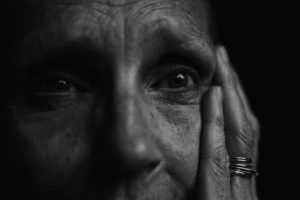
A third form of abuse that this researcher observed happened in under-staffed nursing homes, where there were not enough nurses available to administer medications at times convenient to the residents. Therefore, these nursing homes often woke some residents up a 5 AM against their will to give them their medications, because with only a few nurses to care for many residents, there was not enough time in a day to administer pills to everyone during normal waking hours.
Most nursing homes are not like the ones in the examples provided. Most are staffed by people who genuinely care about the people they serve. But for people who are mistreated or abused in nursing homes, there are ways to reach out and get help:
- The Long-Term Care Ombudsman program is specifically set up to uphold and improve the quality of care in long-term care facilities such as nursing homes. The Long-Term Care Ombudsman advocates for residents to try to ensure their rights are being upheld within long-term care facilities, and to make sure that their preferences and wishes are being honored. To reach a local ombudsman, people can call the State number at 1-866-485-9393, or visit https://mltcop.org/
- If someone wishes to submit a formal complaint pertaining to a person’s care in a nursing home, including concerns of abuse and neglect, Licensing and Regulatory Affairs (LARA) with The Bureau of Community and Health Systems (BCHS) accepts and processes complaints against various state licensed and federally certified health facilities, agencies, and programs, including nursing homes. These complaints can be submitted via toll-free Complaint Hotline at 800-882-6006 or online at michigan.gov/lara.
- People who suspect abuse, neglect or exploitation should also call Adult Protective Services at 855-444-3911 any time day or night to make a report. Staff will investigate allegations within 24 hours after the report is received.
- For more information on how to document and report elder abuse, see this handout, put together by the Michigan Elder Abuse Task Force: https://mltcop.org/sites/default/files/2019-12/Elder%20Abuse%20Brochure_2%20%282%29.pdf
Written by Anna Clements
Sylvia’s Blog
- Wine Tasting 2025 May 19, 2025
- Comorbid Dangers: Financial Abuse November 4, 2024
- Comorbid Dangers: Domestic Violence & Animal Abuse September 16, 2024
HOURS
Office:
24/7
CONTACT
Administration Office/
Non Residential Services:
269.673.5742
24 Hour Crisis Line:
269.673.8700
PO Box 13
650 Grand St
Allegan, MI 49010
Email:
support@sylviasplace.com





